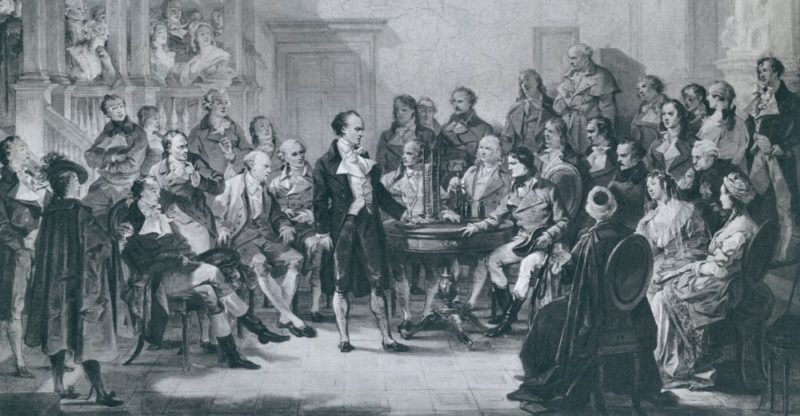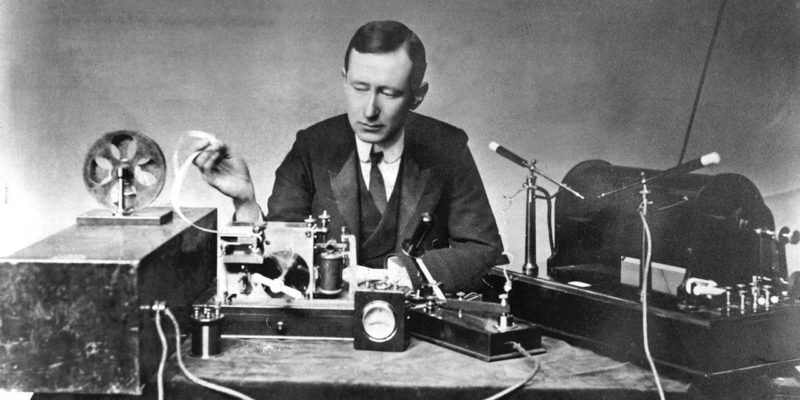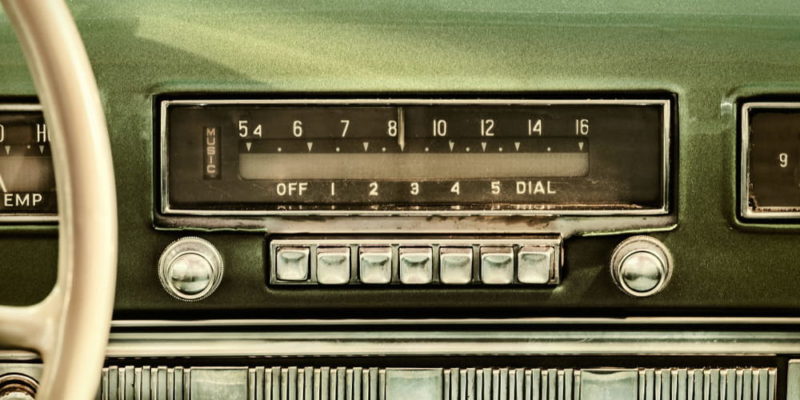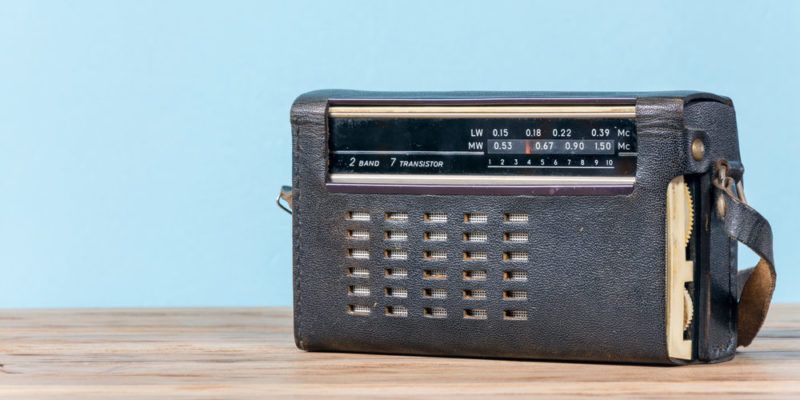We explain the history of radio, its background and evolution. Also, what are its characteristics and first transmissions.
Radio History
The history of radio includes the various discoveries, discoveries and inventions that allowed the emergence of radio broadcasting and radio devices in their various versions, for which the discovery of the transmission of electromagnetic waves was key, first.
The history of radio, thus, comprises at least a century of scientific and technological innovation , carried out by some of the most privileged minds in physics, engineering and applied sciences . It begins in the late 19th century and culminates in late 20th century digital radio .
The radio was a very important invention that forever revolutionized human communications and allowed the development of later technologies such as television , wireless Internet or Radar and Sonar.
The Physics of Electromagnetic Waves

The propagation of electromagnetic waves was formulated by James C. Maxwell in 1873 , the product of his experiences on the matter in the previous decade. Maxwell realized that changing electric fields created changing magnetic fields and vice versa, thanks to which electromagnetic waves could be generated that propagate in space.
Maxwell's theories were put into practice by Heinrich R. Hertz in 1888: he managed to artificially create electromagnetic waves and detect them, through an apparatus of his manufacture. Hertz showed that the waves had characteristics similar to light and moved at a similar speed.
Consequently, waves could also be reflected, deflected, polarized, etc. , since they were electromagnetic variations of the same spectrum. In homage to this scientist, electromagnetic waves are called “Hertzian waves”.
The first transmission of hertzian waves took place on Christmas Eve 1906 , thanks to a high frequency electromagnetic alternator that generated amplitude modulated (AM) waves. The voice of Reginald Aubrey Fessenden singing a Christmas carol was broadcast from Brant Rock Station, Massachusetts, and his voice was picked up by ships on shore.
Radio Background

Before the radio was invented, two important inventions arose in the early and mid-19th century:
- The voltaic pile. Created by Alessandro Volta, which was a kind of battery capable of producing electric fields.
- The Telegraph. Created by Joseph Henry, and improved by Samuel Morse, it was a device capable of sending and receiving electrical signals transmitted along a conductive cable, then translating them into a written message, thanks to a numerical code.
And finally there is the invention of the Soviet Aleksandr Popov , who invented the antenna and made with it the first short-distance electromagnetic wave transmissions.
Origin of Radio
 There is a historical controversy regarding the creator of the radio. On the one hand, the famous Serbian inventor Nikola Tesla filed the first patent for a Hertzian wave receiver . However, the Italian Guglielmo Marconi produced the first Hertzian wave receiving apparatus in 1896.
There is a historical controversy regarding the creator of the radio. On the one hand, the famous Serbian inventor Nikola Tesla filed the first patent for a Hertzian wave receiver . However, the Italian Guglielmo Marconi produced the first Hertzian wave receiving apparatus in 1896.Marconi proceeded to demonstrate to the navy and army the applications of his invention, and for this he is remembered as the creator of radio. Many believe that there is evidence of the Marconi robbery .
The confusion stems from the United States Supreme Court ruling in 1943 against the Marconi Wireless Tel. Co. , a company that claimed radio use by the US Army during World War I , without paying patent fees. However, said ruling has nothing to do with who invented the radio.
The first radio set
The first radio device in history was the galena radio, invented in 1910 by the Americans Henry Dunwoody and Greenleaf Whittier Picard. It was a "portable" device weighing about ten kilograms, made from the lead sulfide crystal known as galena. It was impossible to change the dial, although the stations continued to be very scarce.Seven more years passed for the first radio with station change , until it was invented by the Frenchman Lucien Lévy, who baptized it as superheterodyne .
First radio broadcasts
 The first radio transmission over great distances was carried out by Marconi himself in 1899 , along the English Channel between Dover ( England ) and Boulogne ( France ), a distance of about 30 miles. Thus, the capacity of this new invention that people called "the wireless telegraph" was demonstrated.
The first radio transmission over great distances was carried out by Marconi himself in 1899 , along the English Channel between Dover ( England ) and Boulogne ( France ), a distance of about 30 miles. Thus, the capacity of this new invention that people called "the wireless telegraph" was demonstrated.Then came the first broadcast in North America , to which we have referred, on Christmas Eve 1906. Regular commercial and entertainment broadcasts began in 1920. One of the first took place in Buenos Aires , Argentina . It was the opera Parsifal by Richard Wagner, broadcast from the roof of the Teatro Coliseo.
Five years later there were already a dozen radio stations in the city and as many in the interior of the country. The transmissions took place in brief slots from sunset to midnight.
Similarly, the world's first regular news-type station emerged in the United States , and was called 8MK (today it's called WWJ). It opened in Detroit, Michigan in 1920, owned by The Detroit News . In 1922, the British Broadcasting Corporation (BBC) was inaugurated in London, which would become one of the most famous in the world.
The golden age of radio
The golden age of radio is considered to be the years from 1920 to 1930 , inclusive, in which there was a true global explosion of radio stations, especially in industrialized countries.At that time , a new moving coil speaker was invented , the work of Americans Chester W. Rice and Edward Washburn Kellogg, which solved many problems when listening to the radio. Until then, there were several methods to do it, such as connecting headphones directly to the box of the device.
The Radio in the Car
 The popularization of the radio led to wanting to listen to it in various areas, including when driving. This is why in 1927 the first car radios were produced and promoted , especially those under the Philco Transitone brand .
The popularization of the radio led to wanting to listen to it in various areas, including when driving. This is why in 1927 the first car radios were produced and promoted , especially those under the Philco Transitone brand .Since then, the association between the radio, the music player and the car has not stopped, taking advantage of the fact that the eye must be occupied while driving, but not the sense of hearing.
Transistor Radio
 In 1948 the world of electronics was revolutionized with the appearance of transistors , the work of the North American company Bell : semiconductor devices capable of interrupting, attenuating or allowing an electric current to flow.
In 1948 the world of electronics was revolutionized with the appearance of transistors , the work of the North American company Bell : semiconductor devices capable of interrupting, attenuating or allowing an electric current to flow.His invention earned the 1956 Nobel Prize in Physics for three engineers, John Bardeen, Walter Brattain, and William Shockley. This device allowed the appearance in 1953 of the first transistor radio, the work of the German company Intermetall.
These new transistor radios were more efficient, lighter, cheaper and smaller than traditional ones. They skyrocketed the production of radio sets by the millions in the 1960s and 1970s, when they became a popular means of following the news during the Cold War . Their lifespan lasted until the 1980s, when they were replaced by new, more efficient technologies .
Digital Radio
 Radio survived until the digital age, despite the notorious decline that it suffered during the 1980s and 1990s, due to the popularization of television. With the Internet and the technological possibilities of the new millennium, it gained new life , and the first digital radios appeared, transmitted online. Podcasts, which are downloadable radio broadcasts, also appeared.
Radio survived until the digital age, despite the notorious decline that it suffered during the 1980s and 1990s, due to the popularization of television. With the Internet and the technological possibilities of the new millennium, it gained new life , and the first digital radios appeared, transmitted online. Podcasts, which are downloadable radio broadcasts, also appeared.
Radio history timeline
- 1873. Maxwell publishes his theory of electromagnetic waves.
- 1888. Hertz creates the first detector and transmitter of electromagnetic waves.
- 1895. Marconi invents the first Hertzian wave receiver using an electrical oscillator created by Hertz.
- 1896. Popov invents the first electromagnetic antenna.
- 1897. Tesla files patent for radio transmitter.
- 1899 Marconi makes the first transmission from one country to another (England to France).
- 1900. AM radio is invented.
- 1901. Marconi and Fleming transmit the first wireless telegraph signal over 1,500 miles.
- 1910. The first galena radio is invented by Dunwoody and Whittier Picard.
- 1914. World War I begins and the radio is widely used to coordinate the location of troops.
- 1920. The first regular and entertainment radio broadcasts appear.
- 1933. FM radio is invented.
- 1948. The transistor radio is invented.
- 1963. First radio broadcast via satellite.
- 1993. The first online radio station appears.
Cultural journalist with great interest in education and technological innovation in the classroom. The future passes through technology and it is already here. .
Leave a reply
Your email address will not be published. Required fields are marked *Recent post

Sport: What Is It, Types, Risks, Features, Characteristics and Examples

Dogs: Emergence, Features, Characteristics, Feeding and Breeds

Story: Definition, Elements, Structure, Features and Characteristics

